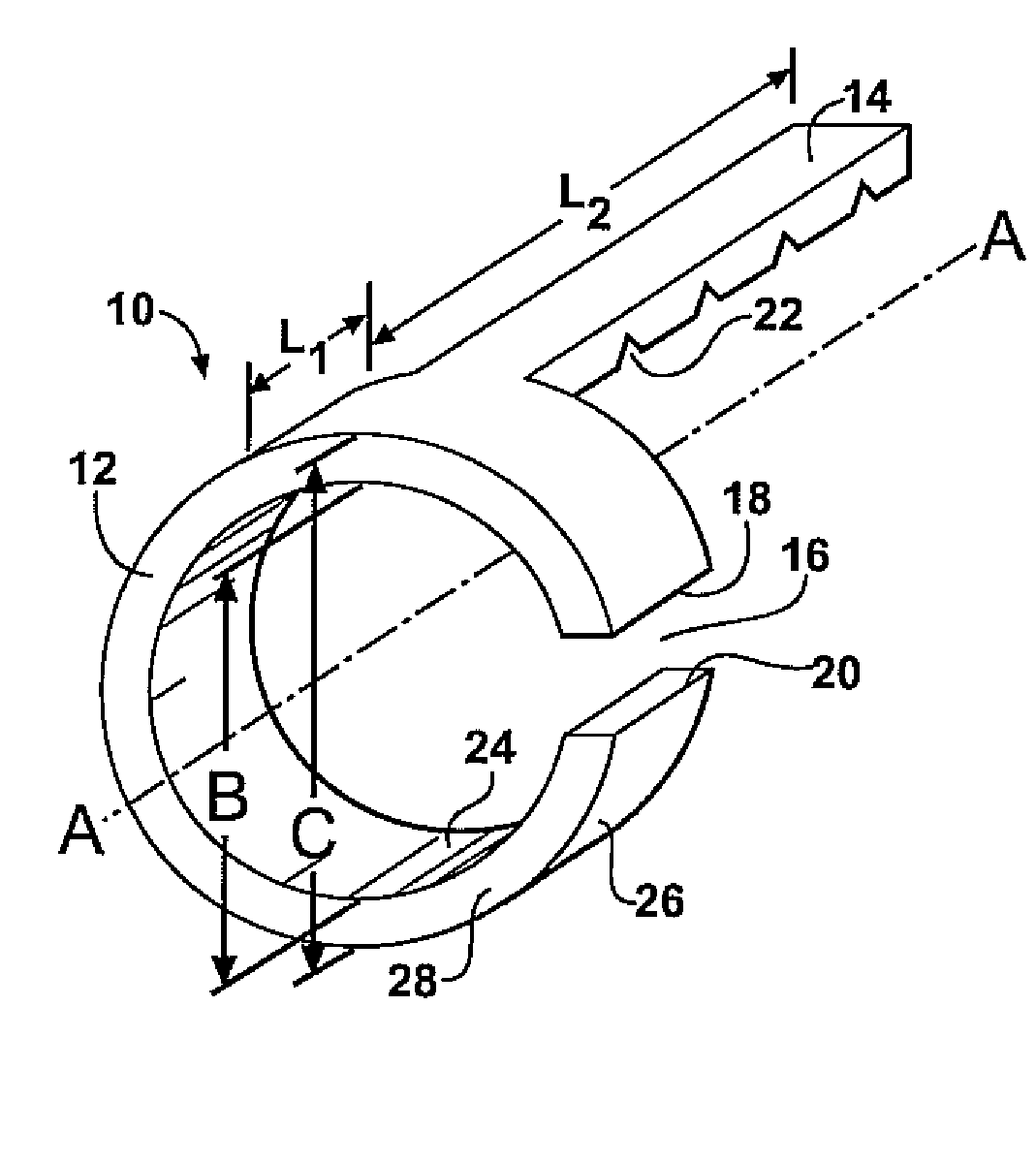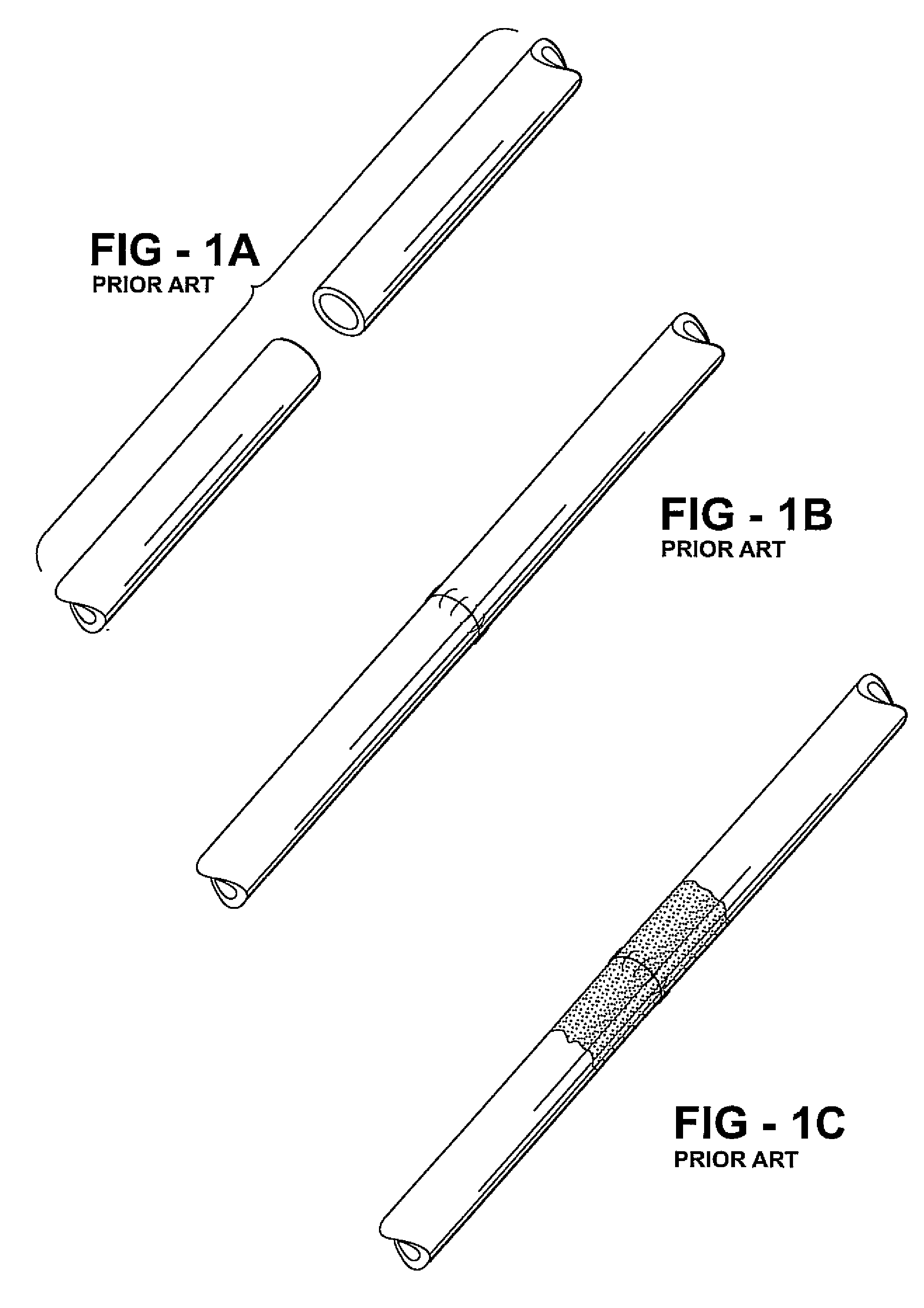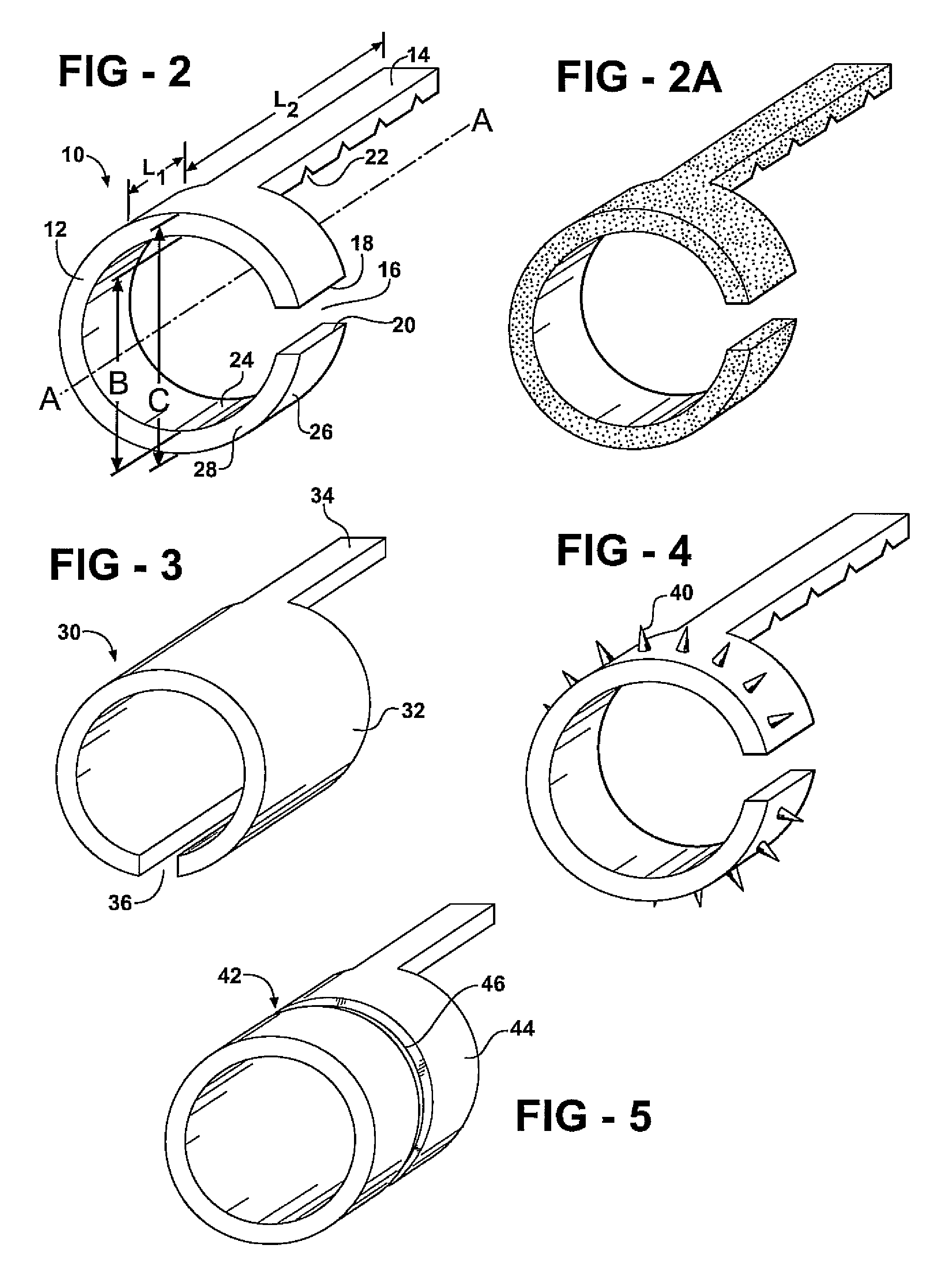Sutureless vessel anastomosis method and apparatus
a technology of sutureless vessels and anastomosis methods, applied in the field of sutureless vessel anastomosis methods and apparatus, can solve the problems of failure and patency rate of procedure, laser or other heating devices, and the inability to achieve the anastomosis of small vessels, so as to improve the adherence of the vessel
- Summary
- Abstract
- Description
- Claims
- Application Information
AI Technical Summary
Benefits of technology
Problems solved by technology
Method used
Image
Examples
Embodiment Construction
[0024]The present invention provides embodiments of apparatus and methods for performing anastomosis of hollow organs such as blood vessels. FIG. 2 illustrates a first embodiment of a blood vessel support 10 according to the present invention. The blood vessel support includes a vessel receiving portion 12 and a handle portion 14 extending therefrom. The vessel-receiving portion 12 may be said to be generally annular or formed as an annulus around an axis A-A. The vessel-receiving portion 12 may be generally cylindrical and extend along the axis A-A or may be shorter and more ringlike. It is preferred that the inner diameter B is generally constant along the longitudinal length L1 of the generally annular vessel-receiving portion 12. The vessel-receiving portion 12 may also be said to have an outer diameter C that is also preferably generally constant along the longitudinal length L1 of the vessel-receiving portion 12. As shown, the vessel-receiving portion 12 is an interrupted annu...
PUM
 Login to View More
Login to View More Abstract
Description
Claims
Application Information
 Login to View More
Login to View More - R&D
- Intellectual Property
- Life Sciences
- Materials
- Tech Scout
- Unparalleled Data Quality
- Higher Quality Content
- 60% Fewer Hallucinations
Browse by: Latest US Patents, China's latest patents, Technical Efficacy Thesaurus, Application Domain, Technology Topic, Popular Technical Reports.
© 2025 PatSnap. All rights reserved.Legal|Privacy policy|Modern Slavery Act Transparency Statement|Sitemap|About US| Contact US: help@patsnap.com



